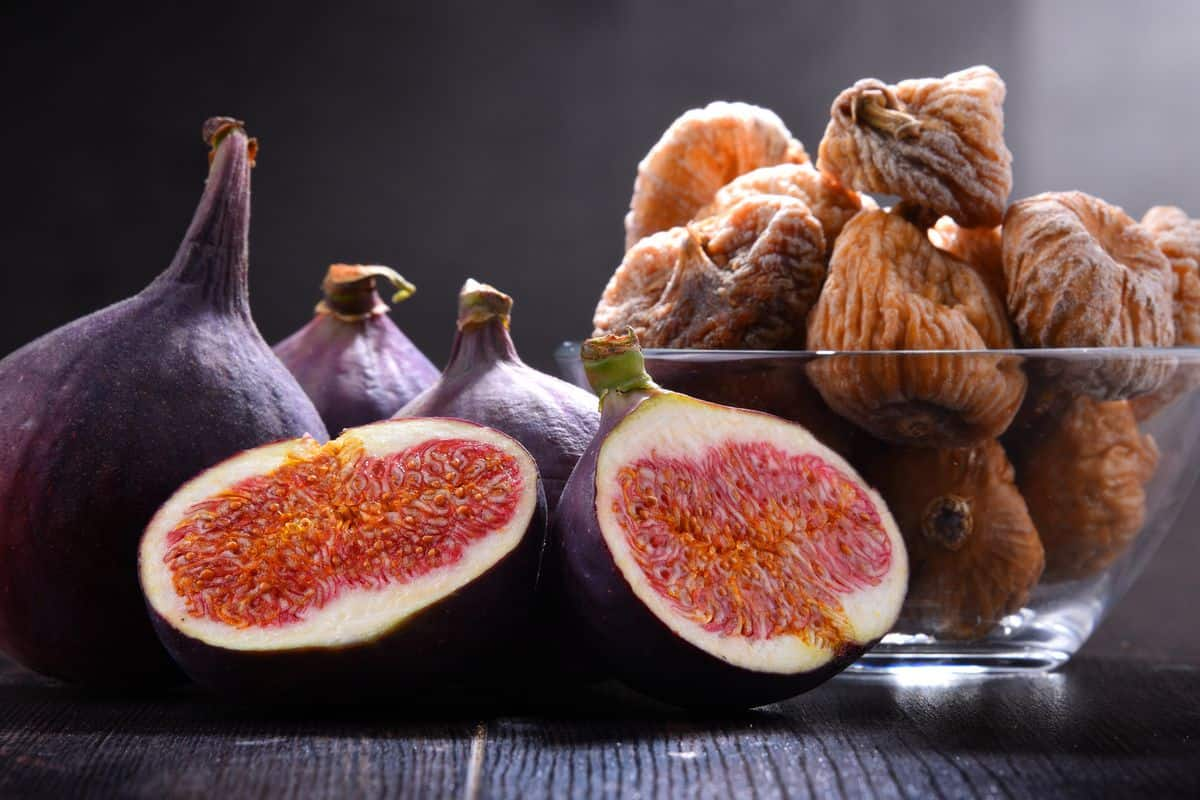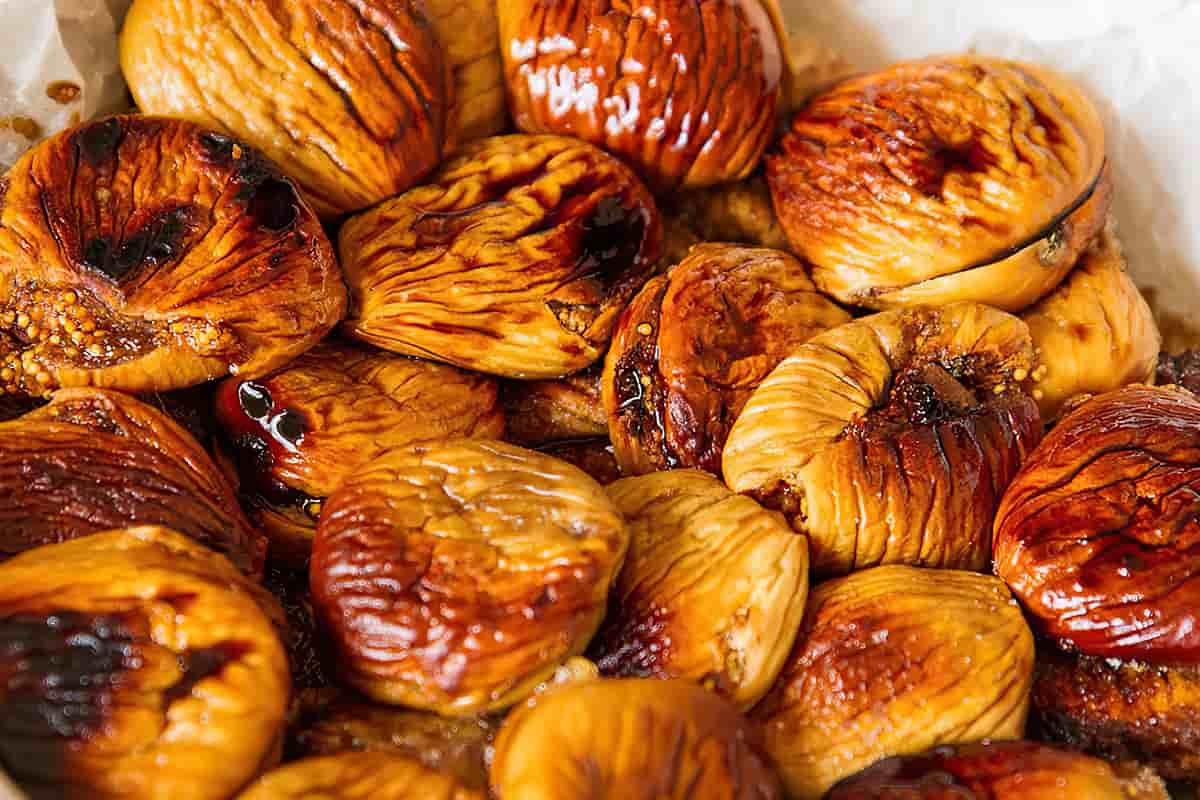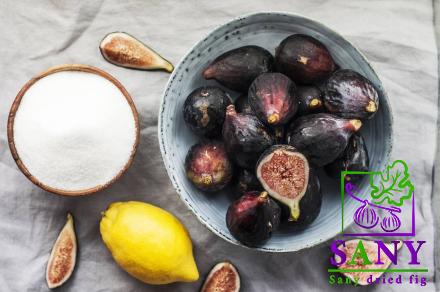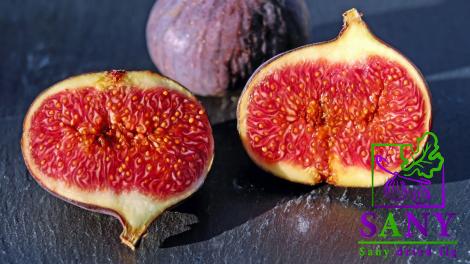Dried Figs Vitamins Minerals
Figs, whether they are fresh or dried, pack a powerful nutritional punch and are an excellent source of a variety of vitamins and minerals
These naturally sweet fruits include substantial quantities of vitamin C, vitamin K, potassium, phosphorus, magnesium, calcium, and fiber
They also contain a good deal of vitamin C and vitamin K
In addition to this, they are loaded with potent antioxidants such as quercetin, kaempferol, epicatechin gallate, and many more
Despite the massive amount of sugar that they contain, they are beneficial to health and may even make it easier to lose weight
This nutrient-dense snack is available in a wide range of flavors, hues, and sizes
Among the most well-known varieties of figs are the Kadota fig, the Sierra fig, and the black mission fig
Dried figs have a lower water content than fresh figs, making them a more concentrated source of calories, sugar, and minerals
About 111 calories, 1
2 grams of protein, 0
3 grams of fat, and 28
8 grams of carbs, of which there are 24
3 grams of sugars and 4
2 grams of fiber, may be found in fresh figs
The number of vitamins and minerals that are found in fresh figs is much lower than that which is found in dried figs; nevertheless, the amount of calories that are found in fresh figs is significantly lower
Figs have a lower calorie and total carbohydrate content than dates do, making them a better option for those watching their weight
One cup of dates contains far more sugar and calories than the same quantity of dried figs, coming in at a total of 415 calories and 110
2 grams of carbs
This is in comparison to the amount of sugar and calories that are found in one cup of dried figs

Dried Figs Vitamins
Figs, both fresh and dried, are an excellent source of many different vitamins
Dried figs have several positive effects on one’s health, including but not limited to the capacity to improve bone density, reduce blood pressure, enhance digestion, promote healthy weight reduction, and control diabetic symptoms, amongst other positive effects
These dried fruits may provide your skin with the much-needed boost it needs since they include a decent quantity of vitamin E, vitamin C, and calcium
These active substances have the potential to function as antioxidants, which may eliminate free radicals and stop them from producing oxidative stress
Oxidative stress is what causes wrinkles, age spots, and other skin imperfections
It also has the ability to increase the flexibility of the skin, which may help you seem younger for a longer period of time
These dried fruits include a wide variety of minerals, which is excellent news for those who want to maintain or improve their bone density since it may help preserve bone density
Fruits such as these have the potential to slow down the process by which the body removes minerals from the bones as a natural part of the aging process
This may lead to brittle joints and an increased risk of osteoporosis
Because they contain a substantial quantity of potassium, these dried fruits are fantastic for bringing blood pressure down to a healthier level
Potassium is a vasodilator, which means that it can reduce the strain that is placed on blood vessels and arteries
As a result, potassium can protect your cardiovascular system from heart attacks, strokes, and atherosclerosis, and it can also reduce the risk you will develop coronary heart disease
In order to boost the immune system’s ability to fight off infections and foreign invaders, vitamin C is an essential supplement

Vitamin C In Dried Fig
Although dried figs do contain some Vitamin C, they are not particularly rich in the source of this vitamin when compared to other foods that have the same amount of Vitamin C per calorie
Dried figs provide 0
5 milligrams of vitamin C for every 100 calories that they contain
This amounts to 0
005 milligrams of vitamin C for every single calorie
One dried fig has 0
1 milligrams of vitamin C in it
To get a better understanding of whether or not dried figs are a great source of vitamin C, let’s look at some additional foods in addition to dried figs
Keep in mind that they include 0
5 mg of vitamin C per 100 calories, which is equal to 0
005 mg for each calorie
In other words, one calorie has 0
005 mg of vitamin C
Because bell peppers have 4
92 milligrams of vitamin C for every calorie, they have a total of 492 milligrams of vitamin C for every one hundred calories
The vitamin C concentration of Brussels sprouts is 197
7 milligrams per 100 calories, which is equivalent to 1
977 milligrams per calorie when expressed in milligrams
The vitamin C concentration of raw cabbage comes out to be 146
4 milligrams per 100 calories, which is equivalent to 1
464 milligrams per calorie
Oranges include 113
2 milligrams of vitamin C for every 100 calories that they contain, which works out to around 1
132 milligrams of vitamin C per calorie
To provide a summary, consuming figs alone will not be sufficient to fulfill your daily need for vitamin C on its own
You might also try consuming other foods, such as oranges and bell peppers, to help you get closer to achieving your objective

Vitamin Content Dried Fig
Dried Figs are a fantastic source of a wide range of important minerals and vitamins, some of which contain calcium, copper, magnesium, potassium, phosphorus, and iron
Figs content is also an excellent source of fiber
Figs are a potential source of potassium, phosphorus, and potassium, in addition to the other minerals and vitamins they contain
Figs are also a fantastic source of fiber, which is an additional benefit of eating them
In addition to the minerals and vitamins that have previously been discussed, figs also contain a wide variety of additional minerals and vitamins
In addition to that, the vitamins A, B6, and C that make up their make-up may be found in satisfactory quantities in their structure
They, in addition to a very great range of other kinds of fruit, are a wonderful source of fiber, as are other kinds of fruit, and the same is true of other kinds of fruit
In addition, they are an excellent source of sugar, as are other kinds of fruit
The prevalent perception that they have a high sugar content is the only aspect that may be considered a disadvantage, and this only pertains to dried figs
Dried figs have a higher sugar content than fresh figs do
The sugar content of dried figs is much greater than that of fresh figs
This misconception does not at all hold with fresh figs
This is especially true for figs that have not yet lost the normal degree of firmness that they normally possess
To put it another way, figs are still in their juvenile stages
However, because of their high-calorie content, dried figs should be consumed in moderation
It is suggested that you limit your daily intake to no more than two to three figs at most
Moreover, dried figs are a nutritious option for those who are looking to acquire weight

Which Vitamins In Dried Fig
We all know which vitamins are in dried figs and are all aware of the vitamins that are included in dried figs as well as the advantages that come along with them; but, in the event that an excessive amount is consumed, let’s discuss what the risks are
You should try to limit your consumption of dried or fresh figs since they contain a lot of fiber, which may lead to stomach troubles if you eat too much of them
Figs are well-known for their ability to provide a burst of sweetness to a variety of different recipes
In addition, figs are an excellent source of fiber, vitamins, and minerals
But only a small percentage of us are aware that this fruit, which belongs to the mulberry family, may play havoc with the human body
According to the findings of recent studies, consuming an excessive amount of figs might lead to dangerous health complications that may need the assistance of a physician

Because of the warm nature of figs and the fact that their seeds might cause your body to react unexpectedly, it is best to consume them in moderation
Figs contain naturally occurring chemical compounds that have the potential to trigger allergic reactions such as conjunctivitis, rhinitis, and anaphylactic shock
People who suffer from asthma should make every effort to steer clear of it, as recommended by medical professionals
Individuals who suffer from diabetes may benefit from eating figs, but the fact that they lower blood sugar levels might be hazardous to other people
Avoiding eating figs is something that is strongly encouraged for those who are dealing with a low blood sugar level
During the colder months, when temperatures drop, it is best to keep the body warm by eating figs
In the winter, it is best to limit one’s intake of figs









